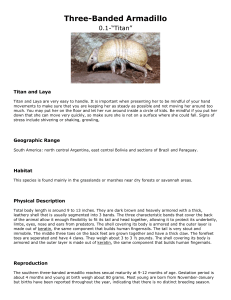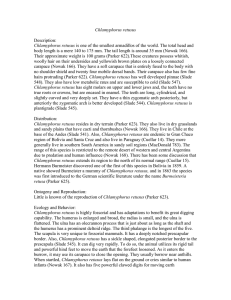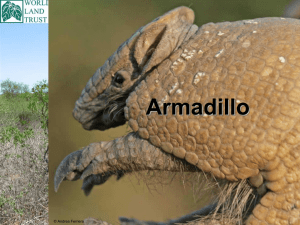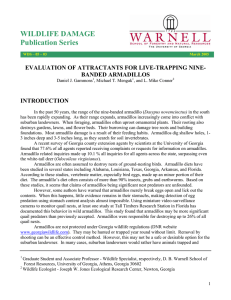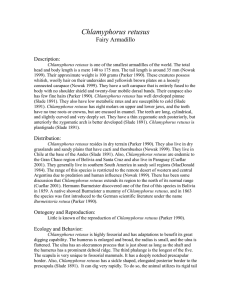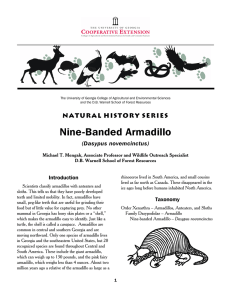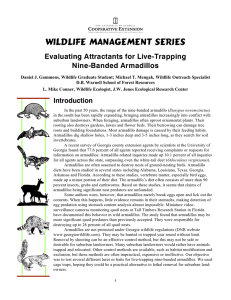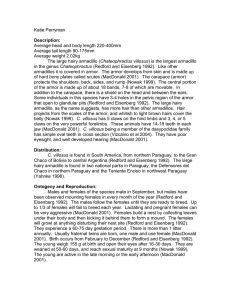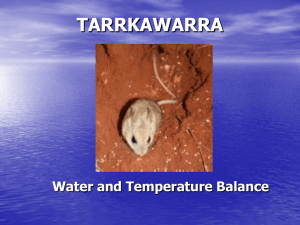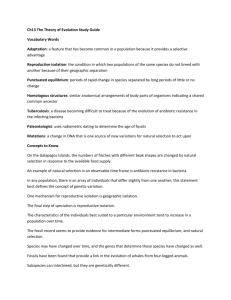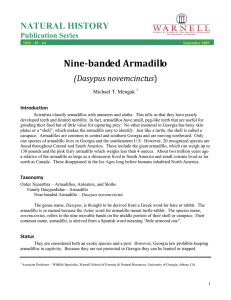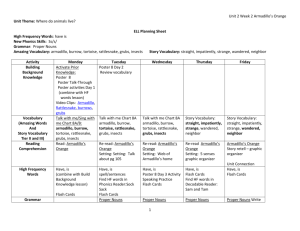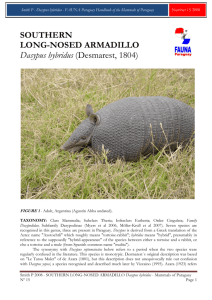Appendix In this section, we aim to elucidate on the technique used
advertisement
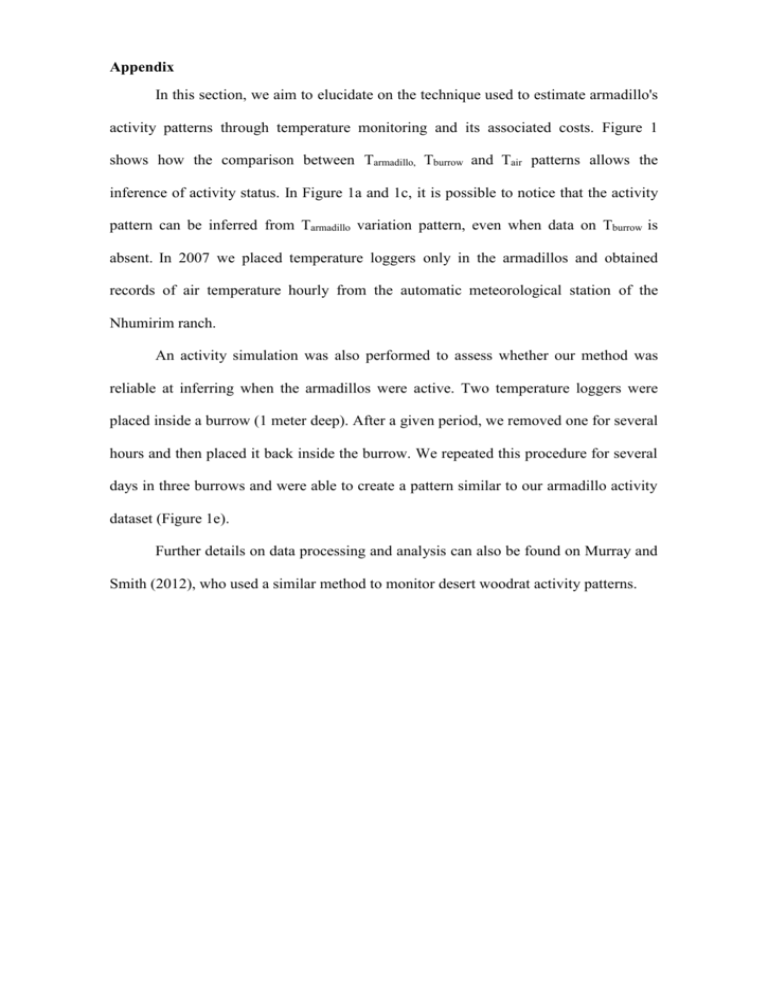
Appendix In this section, we aim to elucidate on the technique used to estimate armadillo's activity patterns through temperature monitoring and its associated costs. Figure 1 shows how the comparison between Tarmadillo, Tburrow and Tair patterns allows the inference of activity status. In Figure 1a and 1c, it is possible to notice that the activity pattern can be inferred from Tarmadillo variation pattern, even when data on Tburrow is absent. In 2007 we placed temperature loggers only in the armadillos and obtained records of air temperature hourly from the automatic meteorological station of the Nhumirim ranch. An activity simulation was also performed to assess whether our method was reliable at inferring when the armadillos were active. Two temperature loggers were placed inside a burrow (1 meter deep). After a given period, we removed one for several hours and then placed it back inside the burrow. We repeated this procedure for several days in three burrows and were able to create a pattern similar to our armadillo activity dataset (Figure 1e). Further details on data processing and analysis can also be found on Murray and Smith (2012), who used a similar method to monitor desert woodrat activity patterns. Fig. 1 Temperature records obtained from data-loggers in a 72-hour period in the Brazilian Pantanal wetlands, during September 2007 and from February 2010 to May 2010. Armadillos' individual temperature records (Tarmadillo), obtained from data-loggers fixed externally to two yellow armadillos (Euphractus sexcinctus; a and b), two ninebanded armadillos (Dasypus novemcinctus; c and d), and from an activity simulation (e) are represented by dotted lines. Continuous lines represent temperature records obtained from data-loggers placed inside burrows (Tburrow). Dashed lines represent air temperature records obtained from an automatic meteorological station (Tair). Gray bands highlight the periods when the animals were active, with Tarmadillo oscillating with Tair. Methodology costs and implications Determining the activity period of mammals is challenging and all current methodologies have restrictions. For example, both radio telemetry and direct observation demand intensive, time-consuming effort. Although some transmitters are equipped with motion sensitive devices that provide reliable information about activity, such equipment often requires considerable human effort or an expensive data logging receiver. In addition, researchers may cause disturbance when tracking an animal with a transmitter, consequently biasing results. Our method allows intensive monitoring of activity without any disturbance caused by 'homing in' techniques. Each temperature logger costs US$159.00 (www.onsetcomp.com) and each VHF transmitter costs US$173.00. As the expected battery life was far longer than our short monitoring time (i.e. ≤18 days), we managed to reutilize transmitters and temperature loggers in different armadillos. Thus, considering the expected battery life of the transmitter (~950 days), if 3 temperature loggers are used (1 for the armadillo, 1 for the burrow and 1 for air temperature), we estimate the daily cost of our method at US$0.68 per animal. If a meteorological station is available for the study area and only one temperature logger is used (attached to the armadillo), the daily cost lowers to US$0.35 per animal. The cost of permanent equipment was not included in these calculations (receptor = US$737, antenna = US$141), as it was already available to us. Hence, as shown in previous studies (e.g. Murray and Smith 2012), this method has shown to be an effective, low-cost means of obtaining full-time monitoring of the activity period of burrowing animals and could be added as a complement to radio telemetry or GPS monitoring studies in order to supply a more complete set of data.
